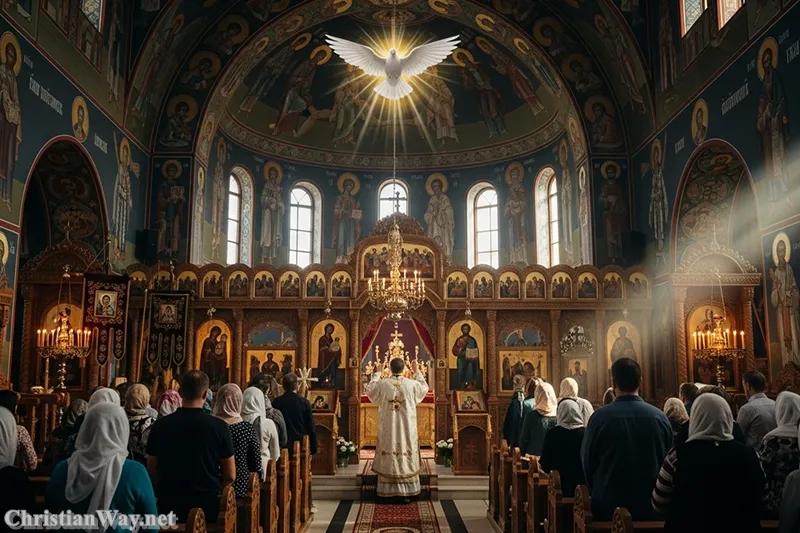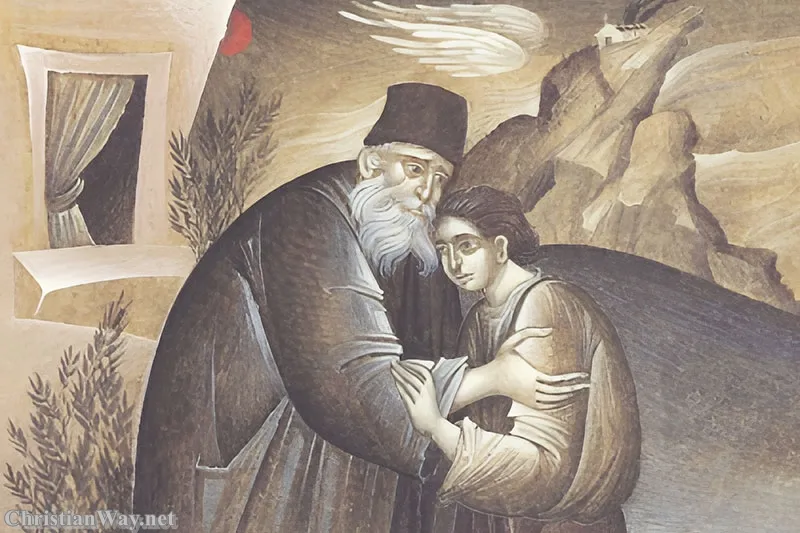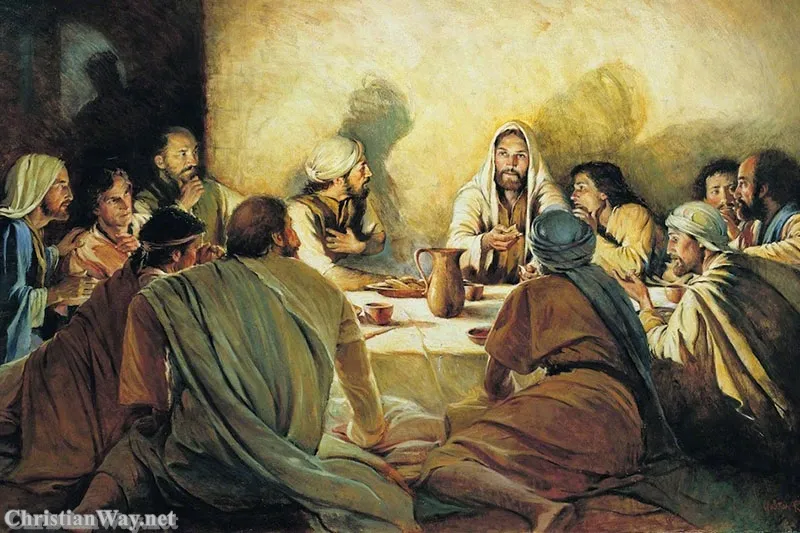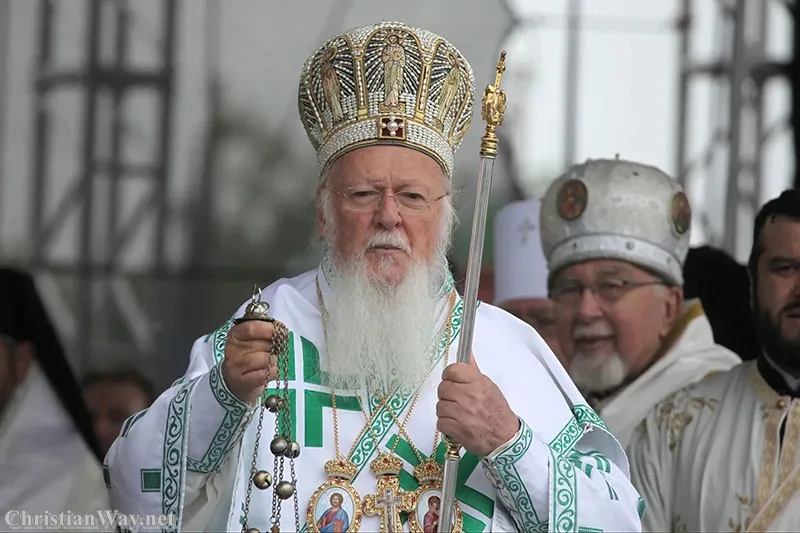Dear brothers and sisters in Christ,
Every attempt to speak of God must begin in reverence and end in silence. For when we approach the mystery of the Holy Trinity — Father, Son, and Holy Spirit — we are standing before the very heart of divine life itself. The Orthodox Church has always taught that the Trinity is not a concept to be analyzed, but a mystery to be adored. In this mystery, we behold not an abstract doctrine, but the living God who reveals Himself in love, communion, and unending light.
The doctrine of the Holy Trinity is not a human invention or philosophical speculation. It is the self-revelation of God, who entered history, spoke through the prophets, and came to dwell among us in the person of Jesus Christ. Through Him, the Spirit was poured into the hearts of believers, and thus the Church came to know God not by reasoning alone, but by experience — by life in the Spirit.
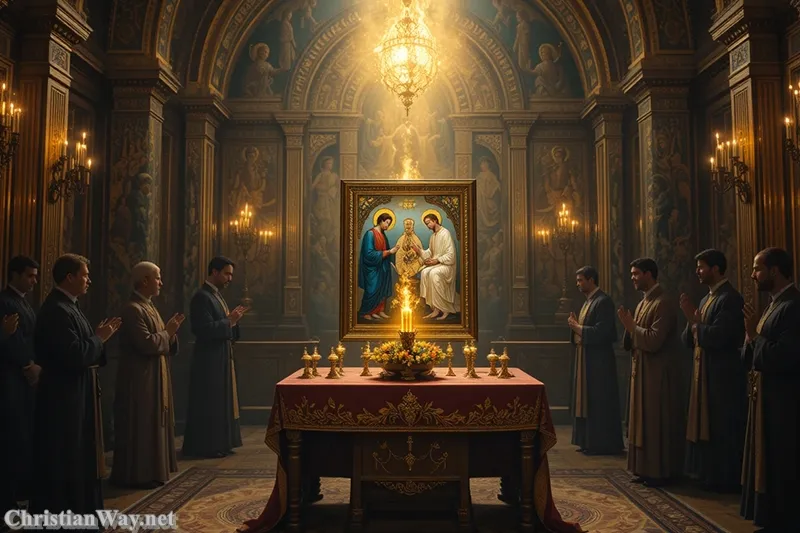
Let us journey gently through this divine mystery, allowing the voice of Scripture, the witness of the Church Fathers, and the prayer of the Church to lead us deeper into the love that unites the Three-in-One.
The Mystery Beyond Words
To the Orthodox mind, theology is not primarily a matter of definitions but of encounter. St. Gregory the Theologian once wrote, “When I think of the One, I am illumined by the splendor of the Three; when I think of the Three, I am carried back into the One.” In these words lies the heart of Orthodox contemplation: we confess the oneness of God without dividing, and the threeness without confusing.
The Church calls this the “mystery of the Holy Trinity” — not to hide truth from us, but to remind us that divine reality surpasses human reason. God is not a solitary being sitting in isolation. He is eternal communion — Father, Son, and Holy Spirit — united in perfect love and will. This is why the Orthodox liturgy begins with the invocation: “Blessed is the Kingdom of the Father, and of the Son, and of the Holy Spirit.”
It is not an academic statement but a confession of faith — a reminder that all worship, all creation, and all salvation flow from the life of the Trinity.
God the Father: Source of All Being
In Orthodox theology, the Father is not “greater” than the Son or the Spirit, but He is the source, the fountain of divinity. From Him proceeds the eternal Son and the Holy Spirit — not as creatures in time, but as eternal persons within the one Godhead.
The Nicene Creed expresses this faith: “I believe in one God, the Father Almighty, Maker of heaven and earth…” The Father is the origin — not in the sense of hierarchy or superiority, but in love and relationship. From Him, the Son is begotten before all ages; from Him, the Spirit proceeds eternally.
The Cappadocian Fathers — St. Basil the Great, St. Gregory of Nyssa, and St. Gregory Nazianzen — were clear that divine unity is found not in a shared “substance” as a mere concept, but in the person of the Father, who eternally gives being to the Son and Spirit. The Orthodox vision of God thus begins not with essence but with relationship — with the Father whose life is love poured out eternally.
The Son: Eternally Begotten, Perfectly Revealed
The Word Who Became Flesh
The Son, eternally begotten of the Father, is not a created being but “God from God, Light from Light, true God from true God.” Through Him all things were made, and in Him the Father’s love is made visible. As St. John declares, “No one has ever seen God; the only-begotten Son, who is in the bosom of the Father, He has made Him known” (John 1:18).
In Orthodox understanding, Jesus Christ is the eternal Word (Logos) through whom the Father creates, reveals, and redeems. The Incarnation is therefore not an interruption in divine life, but its revelation in history. What was hidden before the ages became manifest in time — that the invisible God might be seen, heard, and touched (1 John 1:1–3).
The Icon of the Invisible God
The Son is called the “icon of the invisible God” (Colossians 1:15), and in Him, humanity is restored to its true image. When Orthodox Christians venerate icons, they are not adoring images, but confessing the reality that the eternal Son took on visible form. Through His humanity, we see the eternal love of the Father shining forth.
Christ is both fully divine and fully human — “one of the Holy Trinity” who entered the world to lift it into the life of God. Through His death and resurrection, He opened the way for creation to share in divine life. Thus, the Son is not only the revealer of the Father but the bridge between the divine and human.
The Holy Spirit: The Breath of Divine Life
The Spirit Who Proceeds from the Father
The Orthodox Church confesses, in harmony with the words of Christ Himself, that the Holy Spirit proceeds from the Father (John 15:26). This phrase, preserved in the original Nicene Creed, is not a matter of theological dispute alone but a confession of the Spirit’s unique relation within the Trinity.
The Spirit is not the Son, nor is He simply the power of God. He is a divine Person — fully God, co-eternal and co-equal — the “Giver of Life”, who sanctifies and dwells in all who believe. As St. Basil writes, “Through the Spirit we come to know the Son, and through the Son we are led to the Father.”
The Spirit in the Life of the Church
From Pentecost onward, the Holy Spirit has been the living presence of God in the Church. He inspires the prophets, strengthens the martyrs, and sanctifies the sacraments. Every prayer, every Eucharist, every act of love is animated by the Spirit, who unites us in the life of the Trinity.
In the Orthodox Liturgy, before the consecration of the Holy Gifts, the priest prays: “Send down Thy Holy Spirit upon us and upon these gifts here offered…” This invocation — the Epiclesis — reveals how deeply the Orthodox Church understands that the Spirit is not an afterthought but the very means by which God’s life is shared with His people.
Unity in Trinity, Trinity in Unity
The unity of God in Orthodox theology is not the unity of solitude but of perfect communion. The Three Persons — Father, Son, and Holy Spirit — are not three gods, nor are they simply three modes of one being. They are distinct persons united in one divine essence and will, sharing one life of love.
The Father is unbegotten, the Son begotten, the Spirit proceeding — yet each fully God. The Cappadocian Fathers expressed this mystery through the word perichoresis — mutual indwelling or interpenetration. The divine Persons exist in one another without confusion or separation. The Father is never without the Son and the Spirit; the Son never acts apart from the Father and the Spirit; the Spirit never moves outside the will of the Father and the Son.
This dynamic communion is reflected in the human call to love. For we are made in the image of God, and therefore, in the image of divine relationship. To live in communion, forgiveness, and mutual love is to live according to the Trinitarian pattern of our Creator.
The Trinity and the Mystery of Salvation
Salvation as Participation in Divine Life
In Orthodox understanding, salvation is not only forgiveness of sins or moral improvement. It is theosis — participation in the divine nature (2 Peter 1:4). Through Christ and in the Spirit, we are brought into communion with the Father.
This means that salvation is Trinitarian in every sense: the Father sends the Son; the Son redeems through His humanity; the Spirit applies that redemption to the human heart. In baptism, we are immersed “in the name of the Father, and of the Son, and of the Holy Spirit,” not as a formula but as an entrance into divine life.
The whole Christian life, from beginning to end, is life in the Trinity — a life of grace, transformation, and union. As St. Athanasius proclaimed, “The Son of God became man so that we might become godlike.” This is not prideful ambition but humble participation: we are drawn into the love that eternally unites the Three.
Icons, Worship, and the Experience of the Trinity
The Icon of the Hospitality of Abraham
One of the most beloved images in Orthodox spirituality is Andrei Rublev’s icon of the Holy Trinity, also called The Hospitality of Abraham. Based on Genesis 18, it portrays the three angelic visitors who appeared to Abraham — interpreted by the Fathers as a foreshadowing of the Trinity.
In the icon, the three figures sit in perfect harmony, encircling a table that symbolizes the divine communion offered to humanity. Their gaze draws the viewer into that circle of love — an image of what salvation truly means: to be welcomed into the eternal fellowship of Father, Son, and Holy Spirit.
Worship as Participation in Divine Life
Every Orthodox service is an act of entering the life of the Trinity. From the opening doxology to the final blessing, every prayer is addressed to one God in three Persons. The Divine Liturgy is not a mere remembrance of Christ but an experience of the Kingdom, where heaven and earth meet in the eternal praise of God.
The repeated Trinitarian hymns — “Holy God, Holy Mighty, Holy Immortal…” — are not formalities but expressions of awe before the living mystery. To worship the Trinity is to find one’s place within divine love.
The Trinity and the Human Heart
The Image of God in Us
Orthodox theology teaches that humanity was created in the image and likeness of the Triune God (Genesis 1:26). This means that at our deepest level, we are made for relationship — for communion with God and one another. The more we love, forgive, and unite with others in truth, the more we reflect the life of the Trinity within our souls.
Sin, by contrast, is isolation — the breaking of communion. It turns the self inward, away from love. Salvation, then, is the restoration of communion — being drawn again into the relational life of God.
The Trinity as the Model of Love
The life of the Trinity teaches us that true love is self-giving. The Father gives Himself to the Son, the Son to the Father, and the Spirit unites them in an eternal bond of love. Human love finds its meaning here: in giving, not grasping; in communion, not possession. Families, communities, and churches all find their true form when they mirror this divine pattern of mutual love.
As St. Seraphim of Sarov said, “Acquire the Spirit of peace, and thousands around you will be saved.” To live in the Spirit is to live in the peace of the Trinity — radiating that light to the world.
A Mystery to Be Adored
The Orthodox Church never seeks to explain away the mystery of the Trinity. It invites the faithful to enter into it — through prayer, worship, and silence. In the Divine Liturgy, after the consecration, the priest proclaims: “We have seen the true Light, we have received the heavenly Spirit, we have found the true faith, worshipping the undivided Trinity, who has saved us.”
This confession sums up Orthodox faith: we do not possess the mystery; we are possessed by it. To know God is to be united with Him in love. The Trinity is not a theory of divine organization, but the very life of God shared with us.
Reflect and Pray
O Eternal Trinity,
Father unbegotten, Son begotten, Spirit proceeding —
in Your unity we find our peace,
in Your love we find our meaning,
and in Your light we see the true light.
Draw us into Your divine communion.
Teach us to love as You love — freely, humbly, and eternally.
May our hearts become living icons of Your glory,
and our lives a reflection of Your perfect unity.
Through the prayers of the saints and by the grace of Your Spirit,
may we live and move and have our being in You,
now and forever. Amen.
— Fr. John Matthew, for Christian Way
